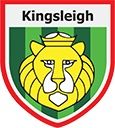Geography
Subject Intent
At Kingsleigh Primary School we believe that geography should inspire children to be curious about the world around them, to ask questions and to use practical skills to find answers. We do this through an enquiry-based approach with plenty of opportunities for every child to participate in outdoor learning, both around the school and beyond. Our geography curriculum is underpinned by out three values; belonging, respect and aspiration. We want our pupils to develop their sense of belonging by understanding how the world is interconnected and how their place within the world fits in.
They develop this in EYFS and Key Stage 1 by studying their immediate local area and the human and physical features found in the area of Bournemouth and Poole. In Key Stage 2, they explore and study further afield on the Jurassic Coast and the River Stour. Our pupils develop respect for the human and physical processes that continue to shape our Earth and understand the impact that humans can have. For example, through studying mountains in year 3, our pupils begin to understand the concept of tourism and how this can positively and negatively impact an area. The concept of respect is further built on in year 5 and 6 where children learn about earthquakes and volcanoes. They develop an understanding of what life is like for communities that live in areas of high volcanic or earthquake activity and compare this with their own lives. Seeing the curriculum through our learners’ eyes is key to the way our curriculum is designed. We want our pupils to see that being a geographer is not just a career, it is a part of our lives and as such, they aspire to make choices that positively impact our world.
Central to our planning is our six key geographical themes: place, space, connection, sustainability, diversity and change. Alongside these are our six key geographical skills including: map work, observations, collecting and recording data, compass skills, measuring and use of digital technologies. Through these, we aim to build important progressive and transferable skills, knowledge and understanding that will prepare our pupils for Key Stage 3 and beyond.
Subject Implementation
Our curriculum is carefully planned to ensure that our pupils’ understanding of the world is progressive. We begin in Reception with a focus on learning about their immediate environment and then gradually progress to knowledge of the U.K, then Europe and the wider world in Key Stage Two. Opportunities to apply geographical skills and fieldwork are carefully interwoven through each unit so that the children have regular opportunities to build on their practical skills.
Very Important Points and Key Skills identify the essential knowledge that we want the children to know by the end of a topic. These knowledge and skills are carefully selected to ensure both National Curriculum coverage and that the children are ready to progress in Key Stage 3. Each unit of work is underpinned by an enquiry question which encourage our pupils to ‘think like a geographer’. The outdoors is central to our geography curriculum and we provide as many opportunities as possible for the children to gain real first-hand experience of a range of physical and human features. For example, in Year Two our pupils visit Poole harbour to make direct comparisons with Sydney harbour and in Year 4 the children visit Lulworth Cove to enhance their learning about coastlines in the UK. Each year group covers three geography units of work; one per half term.
We regularly assess the children’s understanding using both summative and formative approaches in order to ensure that every child is secure in their understanding and that they can make links to prior learning. The use of retrieval activities at the start of every lesson helps the children to embed the essential knowledge. At the beginning of each unit, we assess the children’s prior knowledge and use this to identify any gaps before moving on with new learning.
Geography Whole School Overview
Knowledge Organisers
Year 1
Year 1 Autumn 2 Geography Knowledge Organiser
Year 1 Spring 2 Geography Knowledge Organiser
Year 2
Year 2 Autumn 2 Geography Knowledge Organiser
Year 2 Spring 2 Geography Knowledge Organiser
Year 3
Year 3 Autumn 2 Geography Knowledge Organiser
Year 3 Spring 2 Geography Knowledge Organiser
Year 4
Year 4 Autumn 2 Geography Knowledge Organiser
Year 4 Spring 2 Geography Knowledge Organiser
Year 5
Year 5 Autumn 2 Geography Knowledge Organiser
Year 5 Spring 2 Geography Knowledge Organiser

